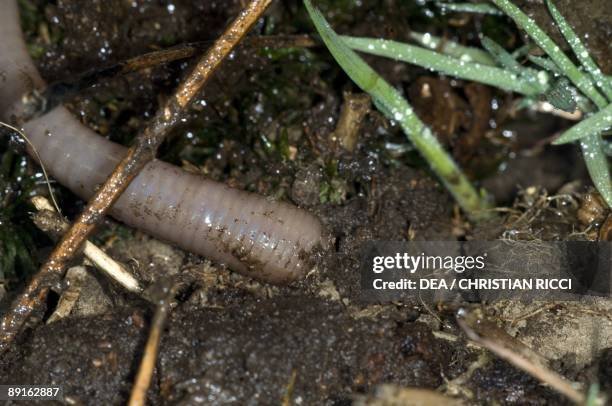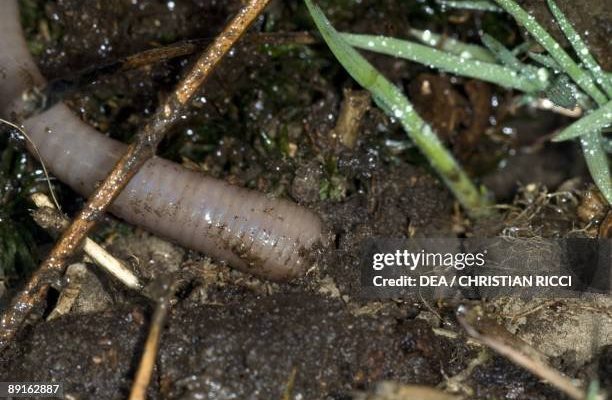
So, what’s the deal with segmented worms anyway? Think of them as nature’s underground marvels. With their soft bodies and segmented features, they play a crucial role in soil health and nutrient cycling. Watching them in their natural environment can teach us about their behavior, interactions, and the ecosystems they inhabit. Plus, let’s not ignore the geeky thrill of using technology to observe wildlife—the science geek in all of us gets a chance to shine!
Choosing the Right Field Camera
When it comes to documenting the behavior of segmented worms, the choice of field camera is crucial. Not all cameras are created equal, and investing in one suited for wildlife observation can make a significant difference. Here are a few things to keep in mind:
- Resolution: A higher resolution means clearer images. Look for cameras that offer at least 20-megapixels.
- Night Vision: Most of the action might happen when the sun goes down, so infrared capabilities are essential.
- Battery Life: You don’t want to miss a moment because your camera died. Choose a model that offers long battery life or the option of using external power sources.
- Durability: The outdoors can be tough on equipment. Make sure your camera is weatherproof and can handle the elements.
By carefully evaluating these factors, you can ensure that your camera setup is optimal for capturing the fascinating, often overlooked lives of segmented worms in their natural habitats.
Setting Up Your Camera
Once you’ve chosen the right camera, the next step is setting it up in a way that maximizes your chances of observing segmented worm behavior. Here’s where a little thought can go a long way:
1. Location, Location, Location: Choose a spot with rich soil, plenty of organic matter, or near compost piles, as worms thrive in these areas. Look for a place where you’ve noticed worm activity before.
2. Height and Angle: Aim the camera a few inches above the ground, pointing it downward to capture their movements effectively. This angle often gives the best view of their burrowing and surface activities.
3. Timing: Set the camera to take images at intervals, like every 10 seconds. This way, you won’t miss the action while the camera is in standby mode.
4. Test Your Setup: Before stepping away, take a few test shots to ensure everything is capturing as intended. It’s like a dress rehearsal for your upcoming documentary!
By following these steps, you can create an environment where the segmented worms feel comfortable enough to go about their daily activities without the disturbances of human presence.
Understanding Worm Behavior Through Observation
So, what exactly do we hope to learn by documenting segmented worm activity? Observing these creatures can reveal a treasure trove of information about their behaviors and habits. Here are some interesting aspects you might witness:
– Feeding Patterns: Worms often come to the surface to feed on decaying leaves or organic matter. This behavior is fascinating to watch, as it demonstrates their role in breaking down organic material, which enriches the soil.
– Burrowing Behavior: Watch how they move through the soil. Their burrowing is essential for aerating the earth and promoting healthy plant growth. A camera can capture how they create tunnels and shift soil.
– Interactions: If you’re lucky, you might see interactions with other organisms, like other worms, insects, or even small predators. This can give you insight into a mini-ecosystem’s functioning.
Here’s the thing: documenting these behaviors doesn’t just reveal the life of segmented worms; it also highlights their importance in larger ecological processes. Plus, you might even spot some unexpected surprises along the way!
Data Collection and Analysis
After you’ve gathered hours of footage over days or weeks, it’s time to sift through the data. Think of this as piecing together a puzzle. You’ll want to look for patterns or anomalies:
– Frequency of Activities: How often did you notice worms feeding versus burrowing? This can tell you a lot about their preferences and daily routines.
– Behavior Changes: Did the worms react differently to weather changes, like rain or dry spells? Such observations can help you understand their adaptation strategies.
– Interaction with Other Species: Were there any other organisms frequently seen with the worms? Understanding these relationships can provide insights into shared ecosystems.
By carefully analyzing your video footage, you can compile findings that contribute to broader scientific knowledge about segmented worms and their vital roles in the environment.
Common Challenges and Troubleshooting
Using field cameras isn’t always smooth sailing. You might encounter a few bumps along the way. Here are some common challenges and how to address them:
1. Blurry Images: If your images turn out blurry, it might be due to camera movement or low light. Ensure your camera is stable and consider using a model with better low-light performance.
2. Too Much Empty Space: Sometimes, you might find that you’ve captured a lot of nothing. Adjusting the camera angle or using a narrower field of view can help you focus more on the action.
3. Battery Issues: If your camera keeps dying too quickly, check if you’re using fresh batteries or consider using rechargeable ones to reduce waste and costs.
By preparing for these challenges ahead of time, you’ll spend less time troubleshooting and more time enjoying the wonders of worm watching.
Sharing Your Findings
Once you’ve collected and analyzed your data, it’s time to share your findings. This is where the fun continues, and you can engage with fellow nature enthusiasts or scientists. Here are some ways to do that:
– Create a Blog or Vlog: Sharing your videos and insights can inspire others to appreciate the tiny creatures in our ecosystems. Consider creating a simple website or social media page devoted to your observations.
– Join Citizen Science Projects: Many organizations welcome findings from amateur researchers. For example, platforms like iNaturalist let you document and share your observations with a community of nature lovers and scientists.
– Present at Local Groups: Whether it’s a school, a local park district, or a community center, sharing your knowledge can spark discussions and interest in worm behavior and ecosystem health.
Here’s the thing: connecting with others who share your interest can lead to new opportunities, collaborations, and a deeper understanding of nature.
In conclusion, documenting the behavior of segmented worms with field cameras is an exciting venture that opens our eyes to a world often overlooked. By choosing the right equipment, setting it up thoughtfully, observing diligently, and sharing your findings, you can contribute valuable knowledge to the scientific community—and enjoy every moment of your worm-watching adventure. So, grab your camera, and happy observing!

